All That Gear -
What's In Our Bag and How Much Does it All Weigh?
All That Gear -
What's in our bag and how much does it all weigh?
All That Gear -
What's in our bag and how much does it all weigh?
All That Gear -
What's in our bag and how much does it all weigh?
All That Gear -
What's In Our Bag and How Much Does It All Weigh?
As another season draws to a close we find ourselves pondering on this favourite again - How many items do we carry around and how much do they actually weigh?
As another season draws to a close we find ourselves pondering on this favourite again - How many items do we carry around and how much do they actually weigh?
Whether we're out up in the hills fishing for wild trout or on a riverbank somewhere closer waiting on the salmon, most of our fishing days are logistically speaking, essentially the same.
All-day day trips.
And as such all the gear we carry has been chosen with this staying-out-fishing -as-long-as-possible thinking in mind and the requirements that come along with that.
As each and every piece of kit needs to be carried along all day, every once in a while it's a good idea to take a closer look at what's been selected and why.
Let's start taking stock and see where we stand with the current total weight.
Whether we're out up in the hills fishing for wild trout or on a riverbank somewhere closer waiting on the salmon, most of our fishing days are logistically speaking, essentially the same.
All-day day trips.
And as such all the gear we carry has been chosen with this staying-out-fishing -as-long-as-possible thinking in mind and the requirements that come along with that.
As each and every piece of kit needs to be carried along all day, every once in a while it's a good idea to take a closer look at what's been selected and why.
Let's start taking stock and see where we stand with the current total weight.
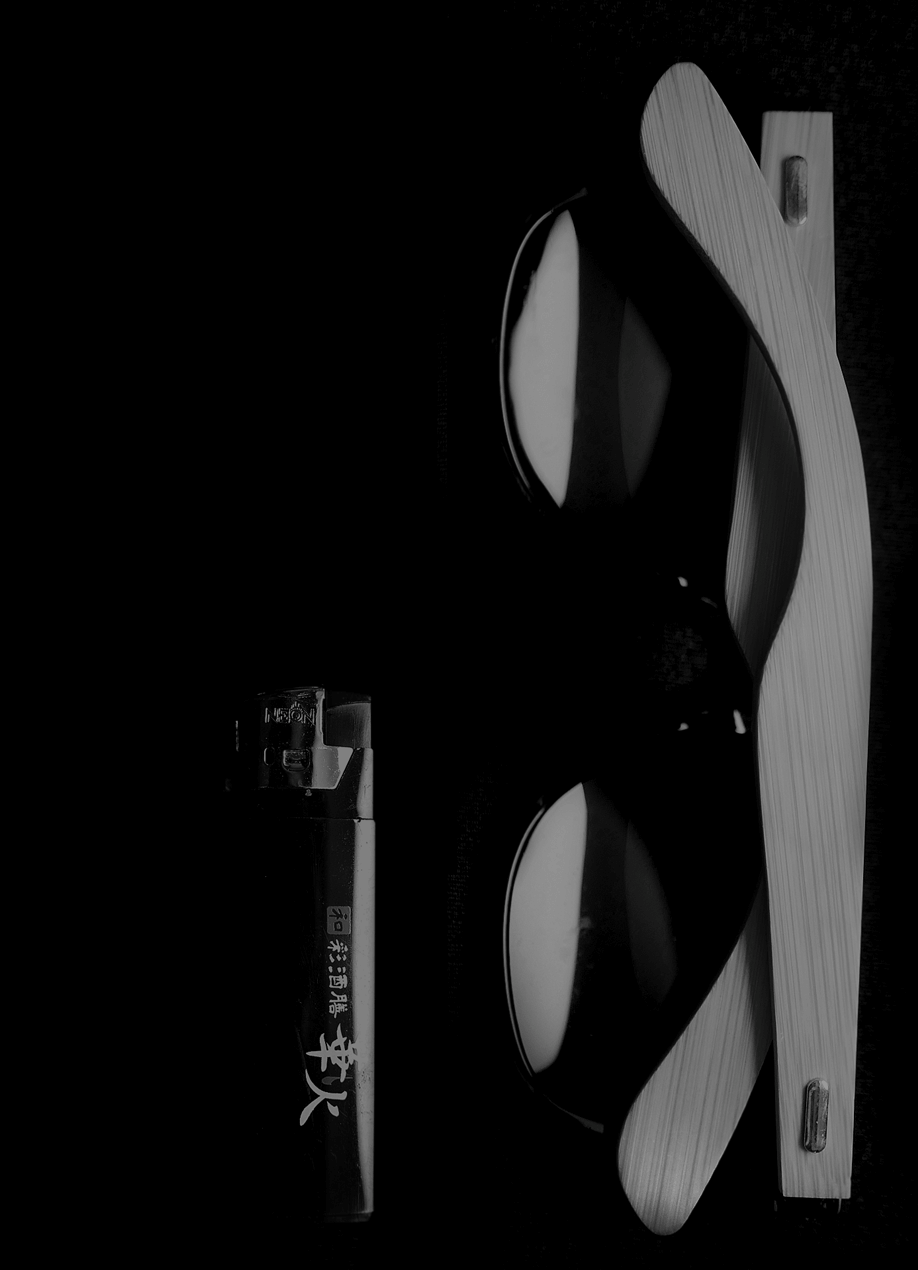
LIGHTER 20 G
SUNGLASSES 30 G
LIGHTER 20 G
SUNGLASSES 30 G
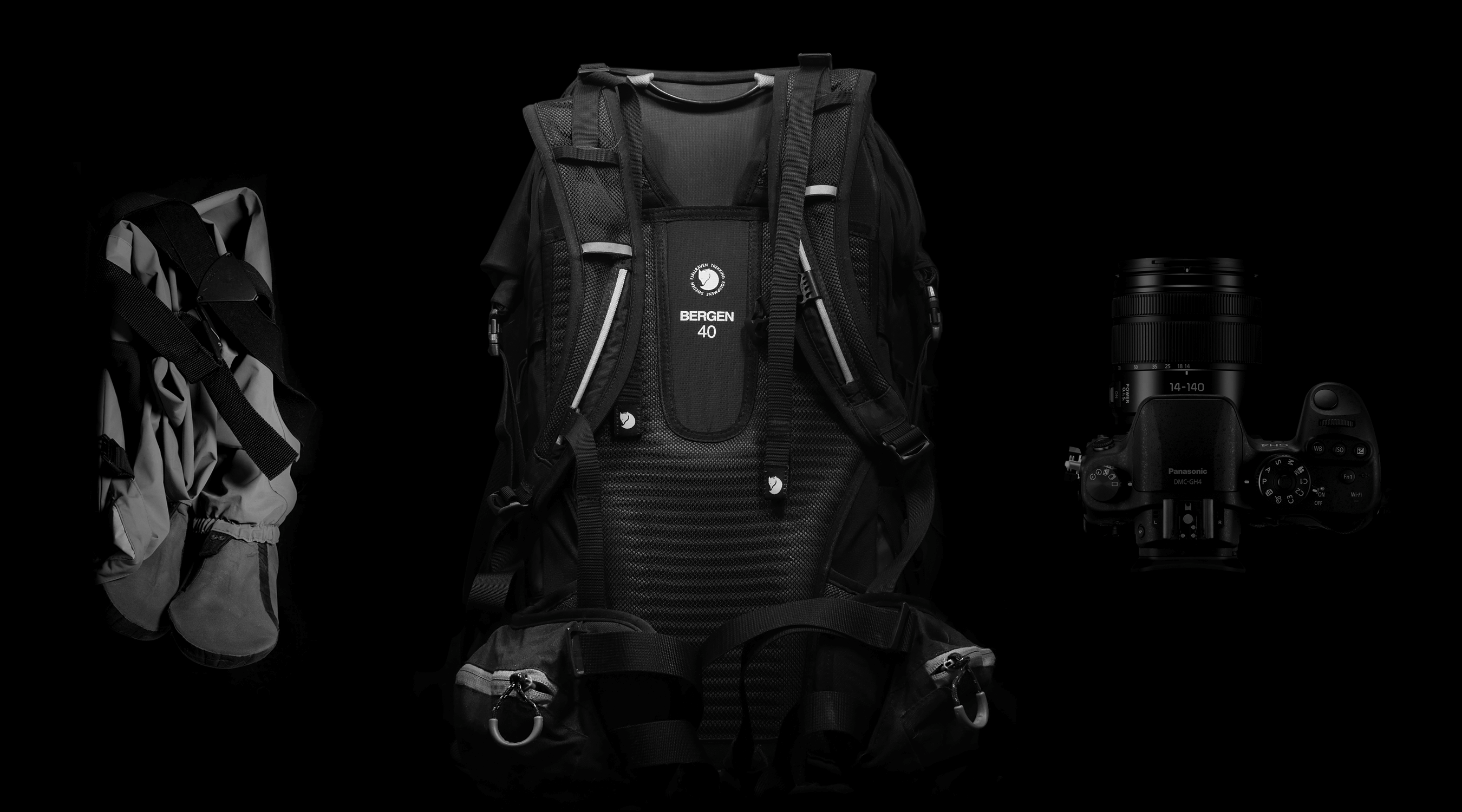
DAYPACK 2500 G
CAMERA, LENSES & BATTERIES 2300 G
WADERS 1200 G
DAYPACK 2500 G
CAMERA, LENSES & BATTERIES 2300 G
WADERS 1200 G
The outer layer
The outer layer
The outer layer
Although making for some of the more bulkier gear, weighing in at around 4 kg, Staying out fishing all day in most parts isn’t really practical without waders, wading boots or a waterproof jacket.
A good durable set of these can make all the difference on a day out and it's really worth trying to save up for quality over time. Better quality gear just generally lasts longer and there's nothing like buying new boots every season to learn this the hard way.
Investing in a packable Gore-Tex jacket, or light but sturdy boots can really shave off the grams on total weight carried all day.
A good daypack is also essential for any kind of extras to be taken along. We have come to like Fjällraven Bergen for its waterproofness, roll-top design and a good carry system, which really help on longer hikes. It also has spacious mesh pockets on the outside for quick and easy stowing of a sling bag, landing net and water bottle.
Although making for some of the more bulkier gear, weighing in at around 4 kg, Staying out fishing all day in most parts isn’t really practical without waders, wading boots or a waterproof jacket.
A good durable set of these can make all the difference on a day out and it's really worth trying to save up for quality over time. Better quality gear just generally lasts longer and there's nothing like buying new boots every season to learn this the hard way.
Investing in a packable Gore-Tex jacket, or light but sturdy boots can really shave off the grams on total weight carried all day.
A good daypack is also essential for any kind of extras to be taken along. We have come to like Fjällraven Bergen for its waterproofness, roll-top design and a good carry system, which really help on longer hikes. It also has spacious mesh pockets on the outside for quick and easy stowing of a sling bag, landing net and water bottle.
Although making for some of the more bulkier gear, weighing in at around 4 kg, Staying out fishing all day in most parts isn’t really practical without waders, wading boots or a waterproof jacket.
A good durable set of these can make all the difference on a day out and it's really worth trying to save up for quality over time. Better quality gear just generally lasts longer and there's nothing like buying new boots every season to learn this the hard way.
Investing in a packable Gore-Tex jacket, or light but sturdy boots can really shave off the grams on total weight carried all day.
A good daypack is also essential for any kind of extras to be taken along. We have come to like Fjällraven Bergen for its waterproofness, roll-top design and a good carry system, which really help on longer hikes. It also has spacious mesh pockets on the outside for quick and easy stowing of a sling bag, landing net and water bottle.

2 x FLY RODS 170 G KUKSA 110 G
2 x FLY RODS 170 G KUKSA 110 G
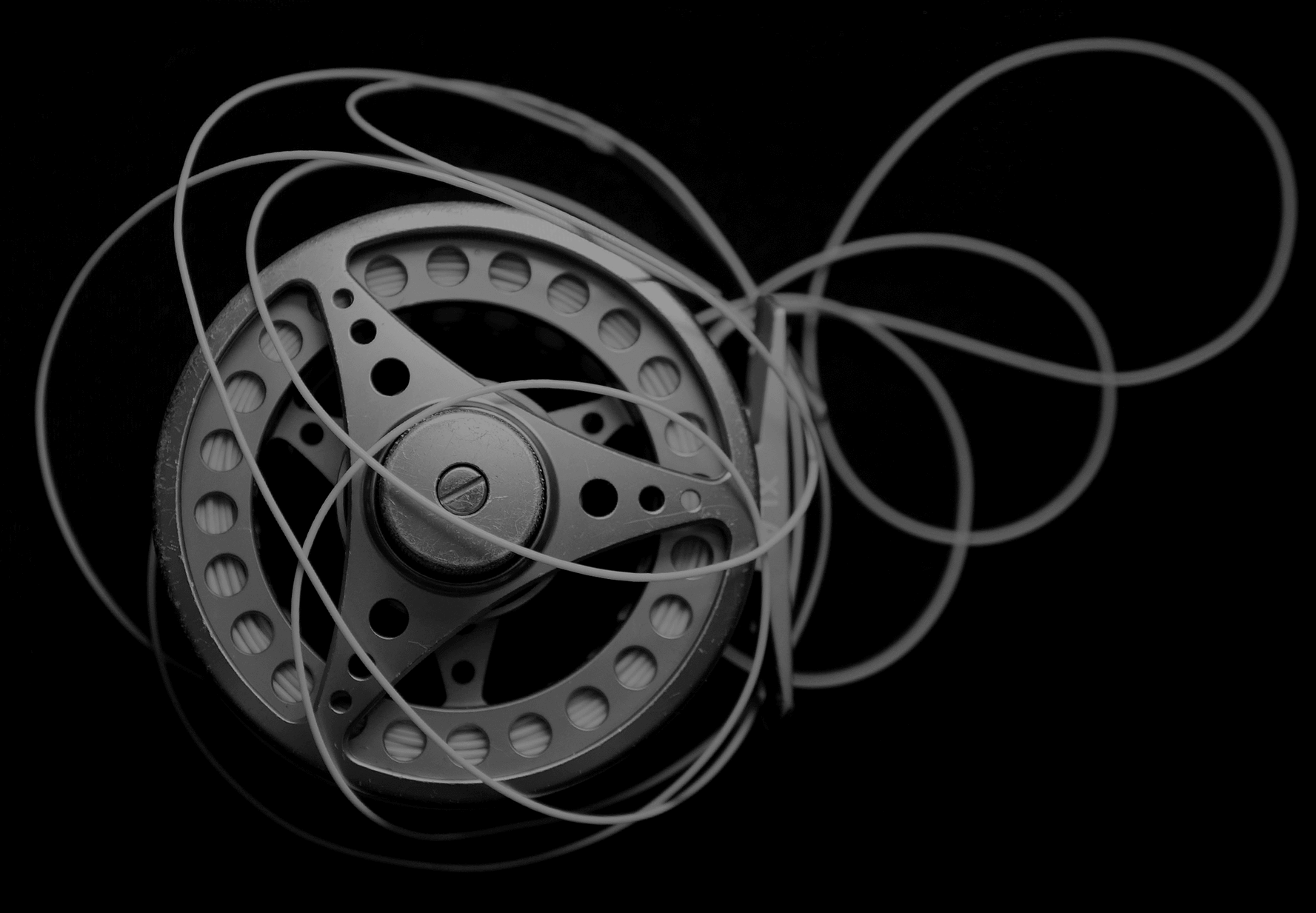
2 x FLY REELS & FLY LINES 320 G
2 x FLY REELS & FLY LINES 320 G
Fly fishing essentials
Fly fishing essentials
Fly fishing essentials
For this kind of all day fishing, sometimes far away from basecamp, we feel that two fly rod sets are essential to take along. To either have one set active and the other as a backup stowed away in the daypack,
or
Two different sets active for easy switching on the go. For example a #5 weight dry fly setup with lighter mono tippets and a #7 with thicker fluorocarbon for big nymphs and streamers.
Weighing in at around 500g for two there's not a lot of savings to be made here, weight wise. Yes setups get slightly lighter over the years and maybe grams can be lost with lighter reels etc. but realistically the only option in our case would be to risk a single rod & reel combo, which seems unlikely to happen.
For this kind of all day fishing, sometimes far away from basecamp, we feel that two fly rod sets are essential to take along. To either have one set active and the other as a backup stowed away in the daypack,
or
Two different sets active for easy switching on the go. For example a #5 weight dry fly setup with lighter mono tippets and a #7 with thicker fluorocarbon for big nymphs and streamers.
Weighing in at around 500g for two there's not a lot of savings to be made here, weight wise. Yes setups get slightly lighter over the years and maybe grams can be lost with lighter reels etc. but realistically the only option in our case would be to risk a single rod & reel combo, which seems unlikely to happen.
For this kind of all day fishing, sometimes far away from basecamp, we feel that two fly rod sets are essential to take along. To either have one set active and the other as a backup stowed away in the daypack,
or
Two different sets active for easy switching on the go. For example a #5 weight dry fly setup with lighter mono tippets and a #7 with thicker fluorocarbon for big nymphs and streamers.
Weighing in at around 500g for two there's not a lot of savings to be made here, weight wise. Yes setups get slightly lighter over the years and maybe grams can be lost with lighter reels etc. but realistically the only option in our case would be to risk a single rod & reel combo, which seems unlikely to happen.
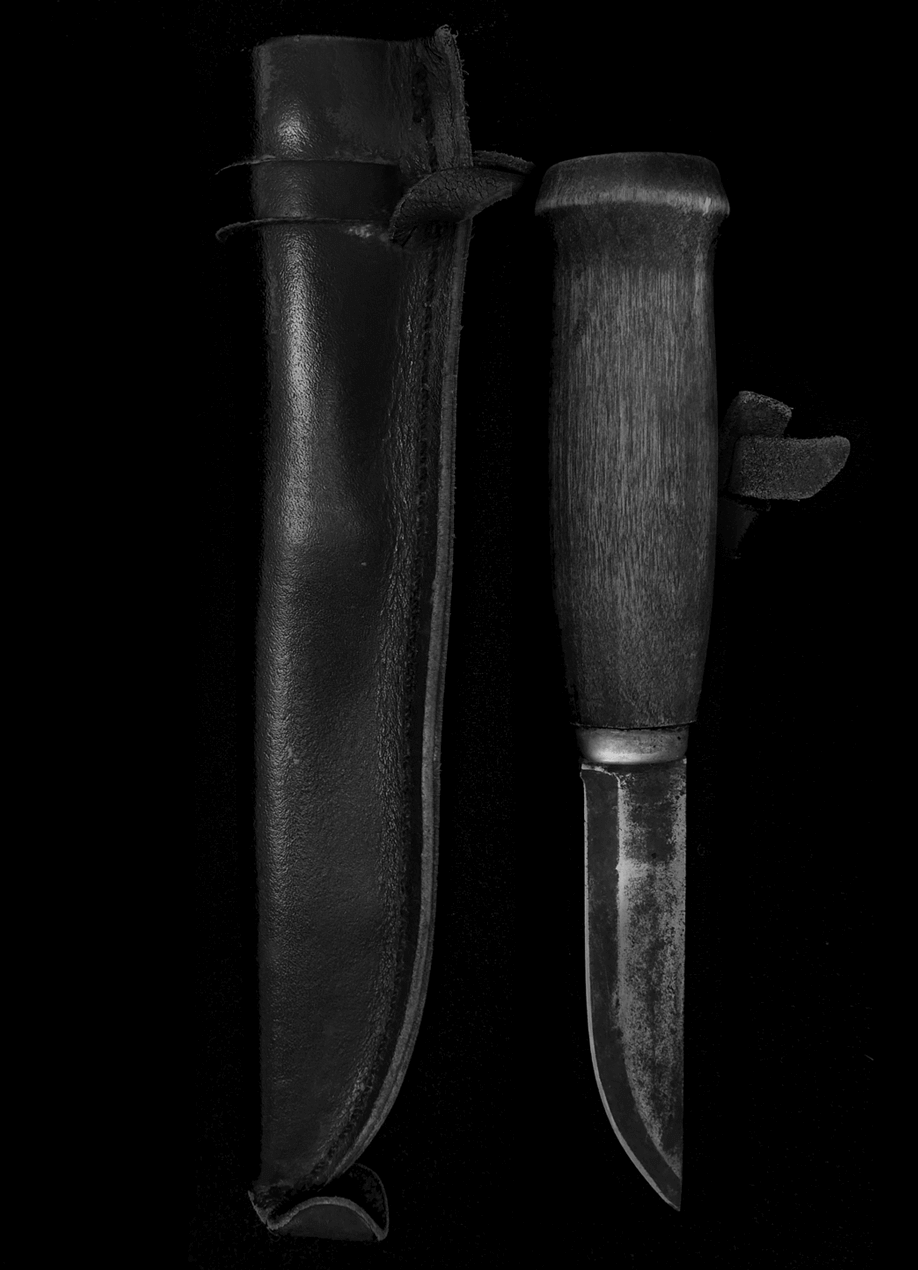
KNIFE 160 G
KNIFE 160 G
KNIFE 160 G
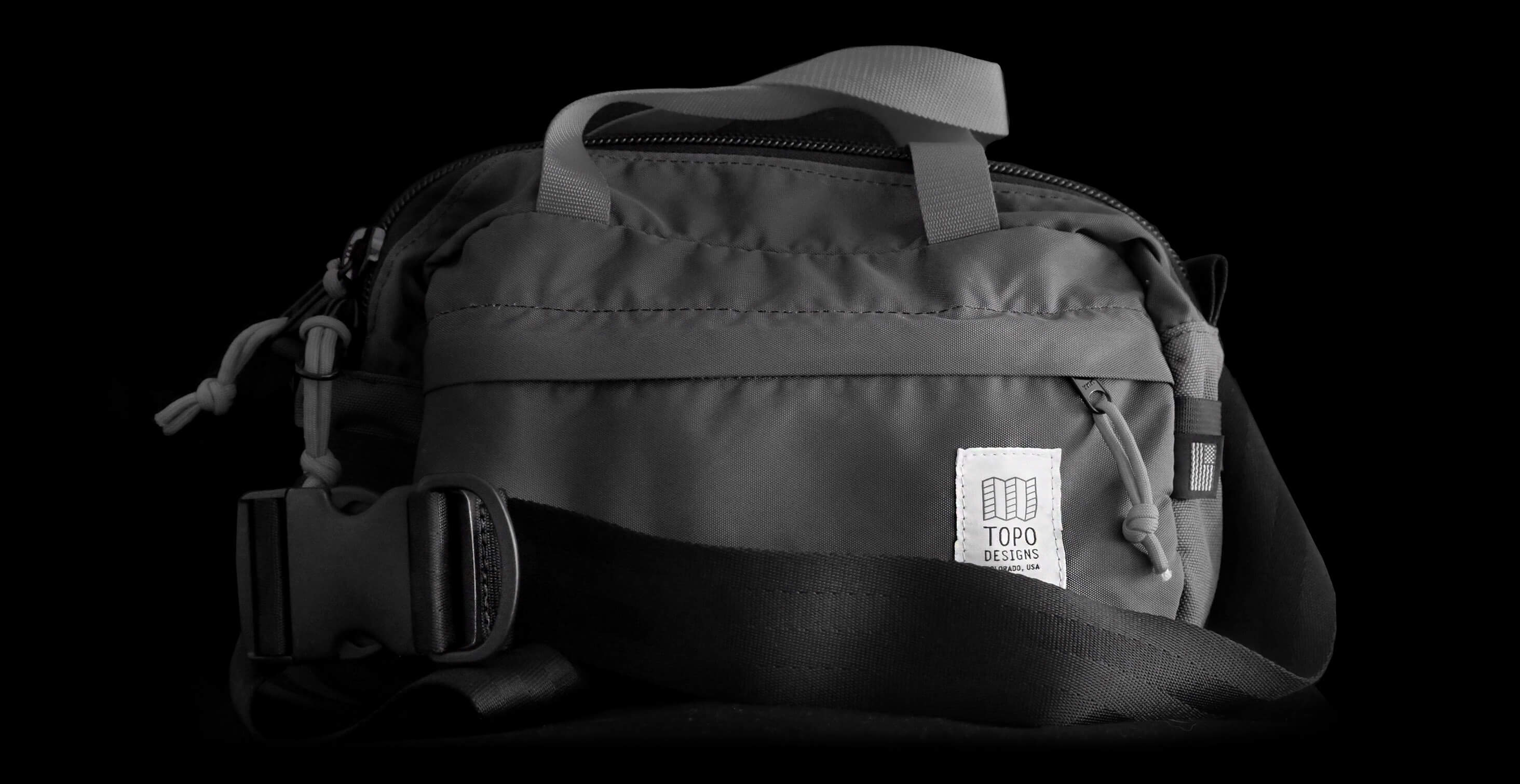
SLING BAG WITH FLY BOXES, LEADERS,
6 SPOOLS OF TIPPET, FLOATANT, LINE CUTTER,
FORCEPS AND DIAMOND FILE
950 G
SLING BAG WITH FLY BOXES, LEADERS,
6 SPOOLS OF TIPPET, FLOATANT, LINE CUTTER,
FORCEPS AND DIAMOND FILE
950 G
Sling, flies & boxes
Sling, flies & boxes
Continuously in a state of change and probably the most thought and rethought part is the choice of carry system for flies, tippets and such. Some choose vests or hip packs or even jacket pockets, but medium sized sling bags seem to work for us. They allow for enough leaders, tippets, flyboxes etc. to be taken along and are still compact enough to take off for breaks and stow away for hikes.
On average we carry a combination of about 4-5 fly boxes - dry fly, nymph / wet, streamer / tubes and a lucky dip (or the-ones-that-didn't-quite-make-it) box. A selection of tapered leaders, 5-6 spools of tippet (mono+fluro), floatant, forceps, diamond file and a landing net attached.
The amount of flies and boxes might seem a little much, but we think absolutely necessary. Even the lucky dip box can't really be left behind. Sometimes the long forgotten fly tucked away there can end up saving the day - Like a daddy long legs pattern tied (badly) many years back, which really shined on one particularly rough day not so long ago.
Weight (~1kg) as such is really not an issue here, but rather the item count. It seems that every space that is available, will eventually be filled with more fly boxes and various stuff if not careful.
Continuously in a state of change and probably the most thought and rethought part is the choice of carry system for flies, tippets and such. Some choose vests or hip packs or even jacket pockets, but medium sized sling bags seem to work for us. They allow for enough leaders, tippets, flyboxes etc. to be taken along and are still compact enough to take off for breaks and stow away for hikes.
On average we carry a combination of about 4-5 fly boxes - dry fly, nymph / wet, streamer / tubes and a lucky dip (or the-ones-that-didn't-quite-make-it) box. A selection of tapered leaders, 5-6 spools of tippet (mono+fluro), floatant, forceps, diamond file and a landing net attached.
The amount of flies and boxes might seem a little much, but we think absolutely necessary. Even the lucky dip box can't really be left behind. Sometimes the long forgotten fly tucked away there can end up saving the day - Like a daddy long legs pattern tied (badly) many years back, which really shined on one particularly rough day not so long ago.
Weight (~1kg) as such is really not an issue here, but rather the item count. It seems that every space that is available, will eventually be filled with more fly boxes and various stuff if not careful.
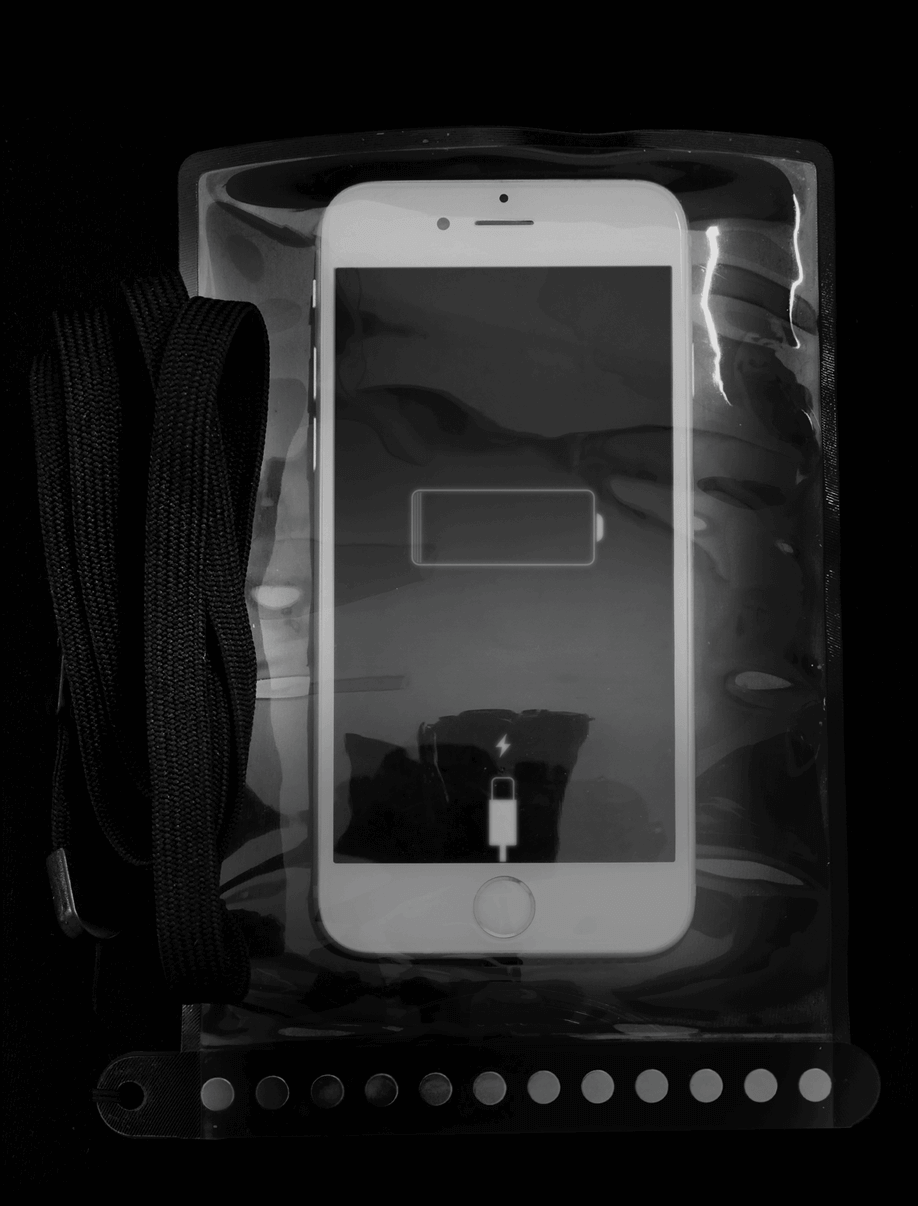
PHONE & COVER 180G
PHONE & COVER 180G

POCKET FLASK, FULL 200 G
POCKET FLASK, FULL 200 G
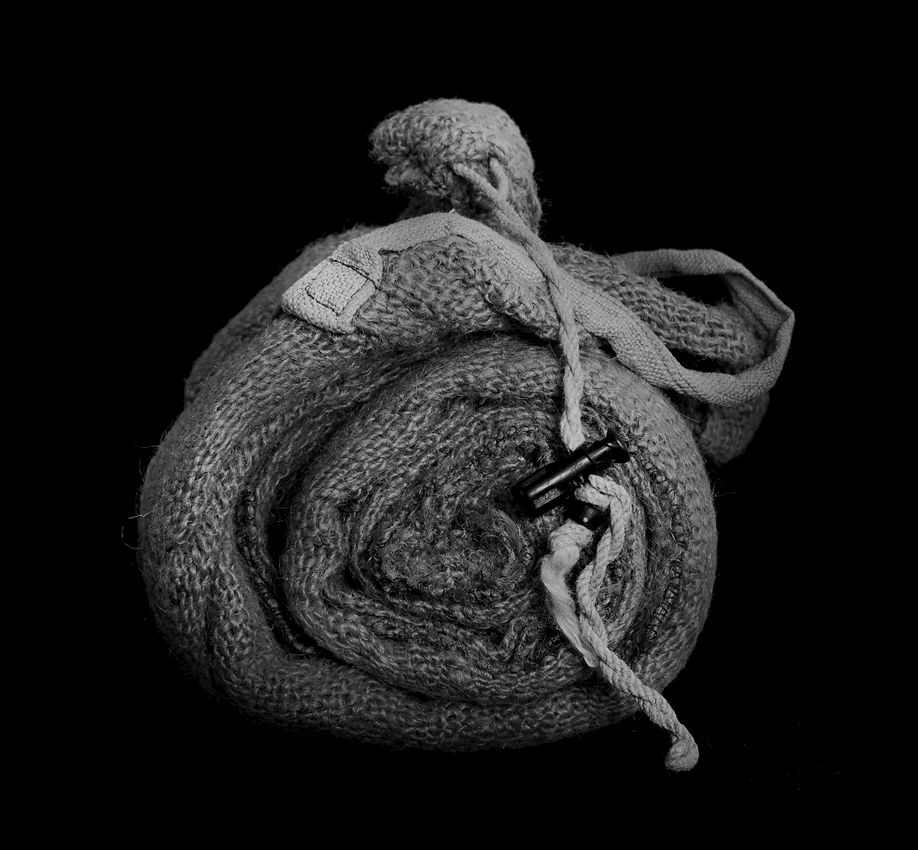
BURLAP CATCH BAG 150 G
BURLAP CATCH BAG 150 G
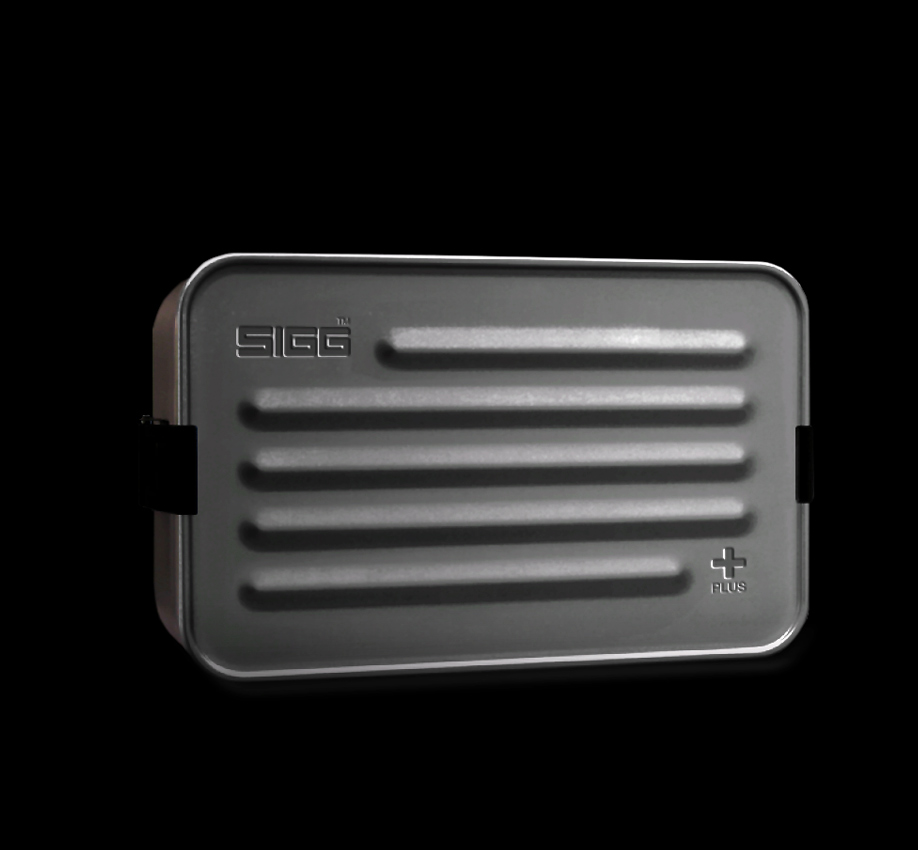
SANDWICHES 500 G
SANDWICHES 500 G
More in the bag
More in the bag
The same goes for the daypack. Often A bigger bag also means more items and ultimately more weight to carry around.
Currently the contents of our bag weigh in at little under 6 kg and it's a bit of a balancing act packing all the necessary things in like a change of shirt, fleece, first aid kit, headlamp, phone, sandwiches & coffee - while not over doing it.
Having said that, we're also out there to experience the day maybe more than anything, so it's not just the bare necessities. Almost always we have a DSLR camera setup (or two) for filming, as well as a little single malt for the successes and memorable moments.
Ultimately the daypack is the one place where the biggest gains or losses on the total weight can be made depending on priorities.
The same goes for the daypack. Often A bigger bag also means more items and ultimately more weight to carry around.
Currently the contents of our bag weigh in at little under 6 kg and it's a bit of a balancing act packing all the necessary things in like a change of shirt, fleece, first aid kit, headlamp, phone, sandwiches & coffee - while not over doing it.
Having said that, we're also out there to experience the day maybe more than anything, so it's not just the bare necessities. Almost always we have a DSLR camera setup (or two) for filming, as well as a little single malt for the successes and memorable moments.
Ultimately the daypack is the one place where the biggest gains or losses on the total weight can be made depending on priorities.

WOODEN LANDING NET 1800 G
FIRST AID KIT 280 G
WOODEN LANDING NET 1800 G
FIRST AID KIT 280 G
Layering clothing
Layering clothing
A merino wool base layer with a sturdy set of hiking socks and a shirt under the wading gear is usually enough, but fishing in the Nordics also means fast changes in weather conditions.
A good quality fleece or a modern lightweight insulated jacket (e.g. Primaloft) will greatly increase the range of conditions that can be stayed out on comfortably. A pair of gloves and a beanie hat will also go a long way towards extra comfort, especially later in the season.
We also carry an extra base layer & socks for the unlikely, but not unheard of, event of falling over while wading and getting soaked thoroughly. Even with less dramatic events, it's nice to be able to change into a dry shirt when needed.
A merino wool base layer with a sturdy set of hiking socks and a shirt under the wading gear is usually enough, but fishing in the Nordics also means fast changes in weather conditions.
A good quality fleece or a modern lightweight insulated jacket (e.g. Primaloft) will greatly increase the range of conditions that can be stayed out on comfortably. A pair of gloves and a beanie hat will also go a long way towards extra comfort, especially later in the season.
We also carry an extra base layer & socks for the unlikely, but not unheard of, event of falling over while wading and getting soaked thoroughly. Even with less dramatic events, it's nice to be able to change into a dry shirt when needed.
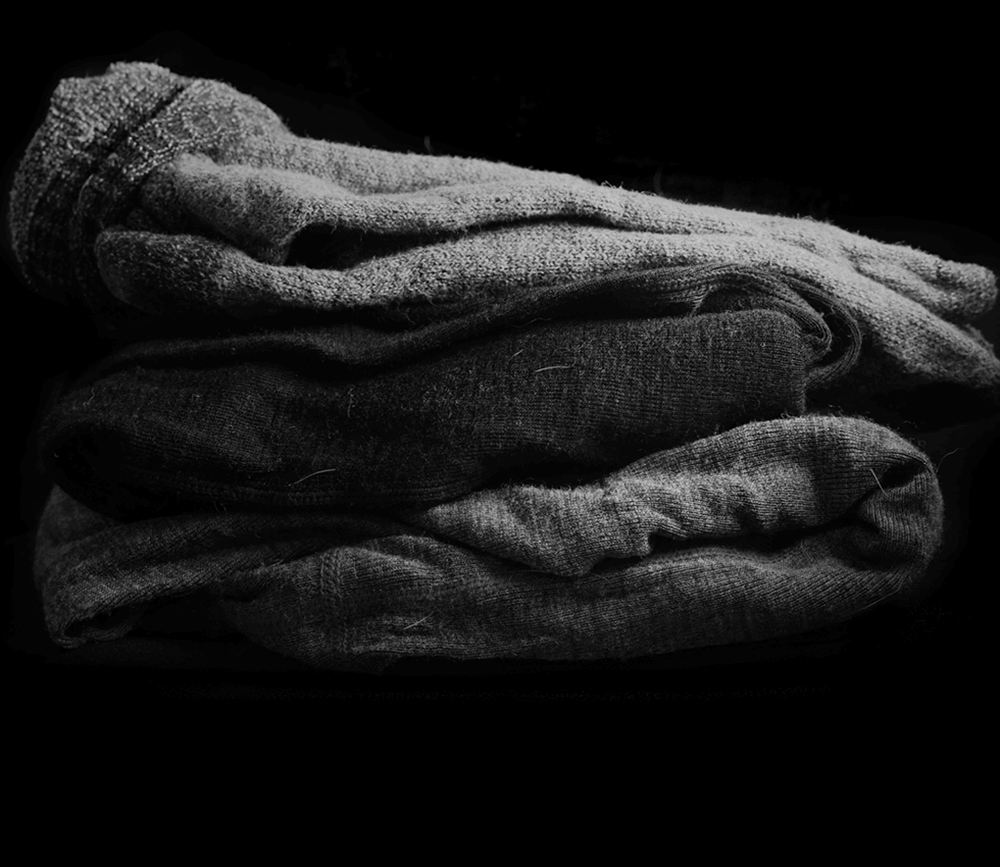
MERINO WOOL BASE LAYER + SPARE 380 G
SHIRT + SPARE 180 G
MERINO WOOL BASE LAYER + SPARE 380 G
SHIRT + SPARE 180 G
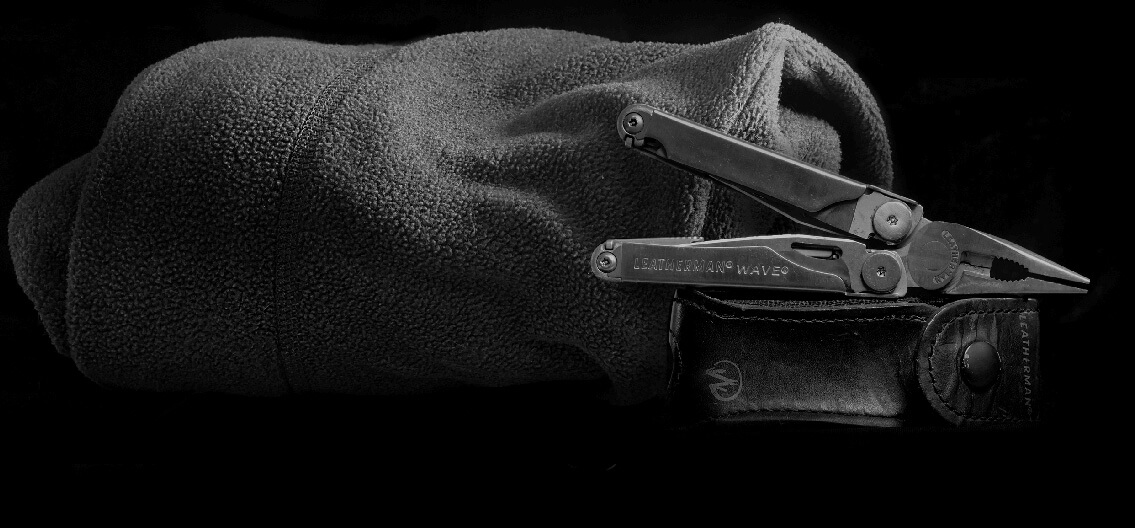
FLEECE + BEANIE 290 G
LEATHERMAN 270 G
FLEECE + BEANIE 290 G
LEATHERMAN 270 G
A lightweight merino wool base layer will outperform any technical equivalent by far, be it moisture transfer, warmness or even odour management.
Generally a little more pricy than the technical stuff and maybe not quite as strong, but for us it's been one of the better investments that should have been made years ago.
A lightweight merino wool base layer will outperform any technical equivalent by far, be it moisture transfer, warmness or even odour management.
Generally a little more pricy than the technical stuff and maybe not quite as strong, but for us it's been one of the better investments that should have been made years ago.
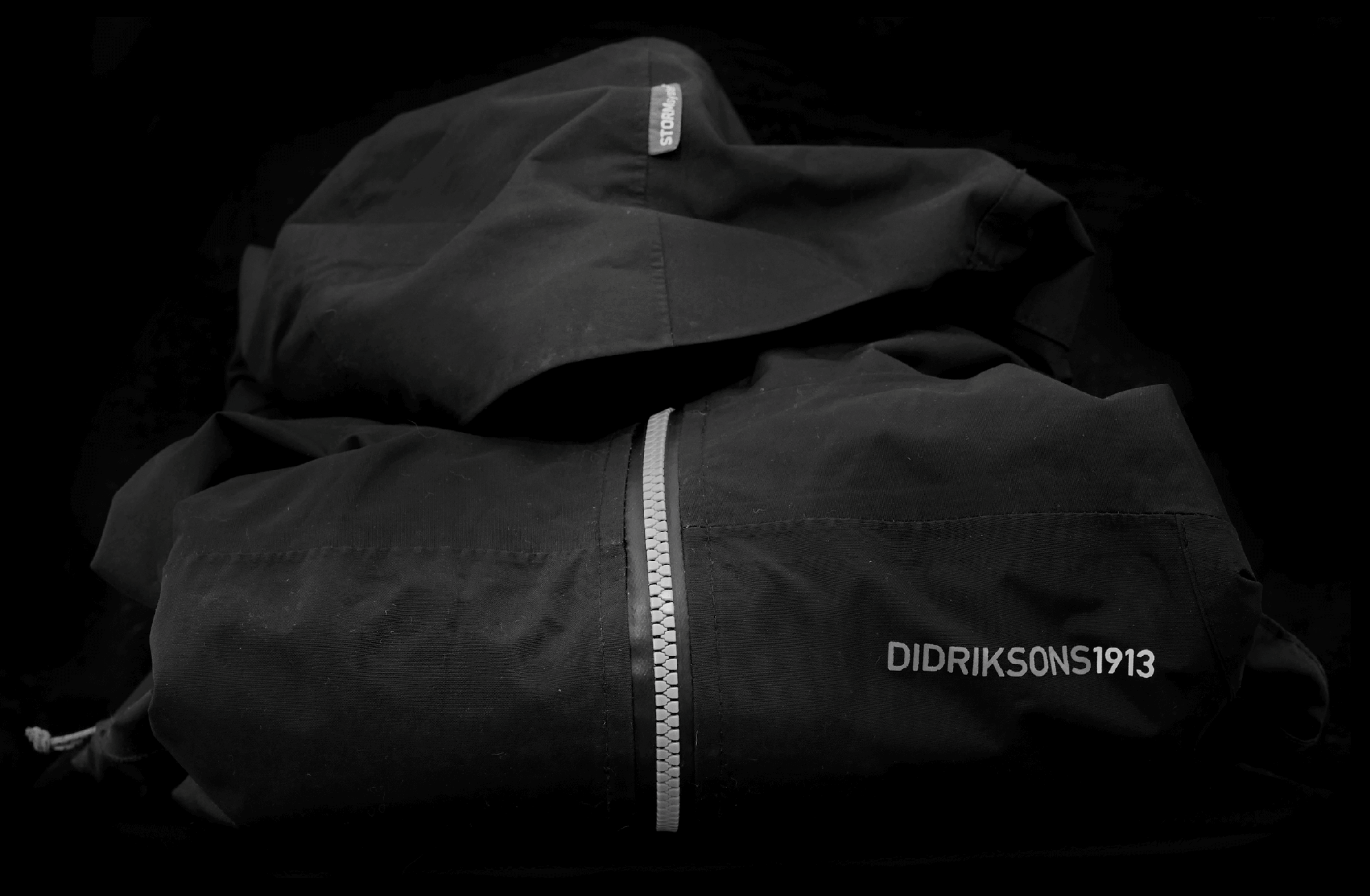
WATERPROOF JACKET 600 G
WATERPROOF JACKET 600 G

COFFEE, POT, GAS & BURNER 650 G
COFFEE, POT, GAS & BURNER 650 G
Eating out
Eating out
What can we say, we're suckers for coffees and sandwiches and always have them with us. Coffee from a wooden kuksa and some home made gravlax on a hard rye bread, mmmm...
Without a doubt a highlight of any day out and just fundamentally satisfying is the chance to get an open fire going. Fresh coffee while nurturing the fire and watching the world go by is something to always look forward to.
For backup and times when bad weather or regulations restrict making an open fire, we have a small camping gas bottle & burner, as well as a foldable twig burning camp stove with us.
Weighing in at around 1.5 kg the easy optimisation here would be to default to just the gas burner and freeze dried foods, but for us the experience side of getting the actual fire going etc. has been more important than the efficiency thus far.
With that, the contents of what's in our bag and on our person has been pretty much covered.
Now let's do the adding up:
What can we say, we're suckers for coffees and sandwiches and always have them with us. Coffee from a wooden kuksa and some home made gravlax on a hard rye bread, mmmm...
Without a doubt a highlight of any day out and just fundamentally satisfying is the chance to get an open fire going. Fresh coffee while nurturing the fire and watching the world go by is something to always look forward to.
For backup and times when bad weather or regulations restrict making an open fire, we have a small camping gas bottle & burner, as well as a foldable twig burning camp stove with us.
Weighing in at around 1.5 kg the easy optimisation here would be to default to just the gas burner and freeze dried foods, but for us the experience side of getting the actual fire going etc. has been more important than the efficiency thus far.
With that, the contents of what's in our bag and on our person has been pretty much covered.
Now let's do the adding up:
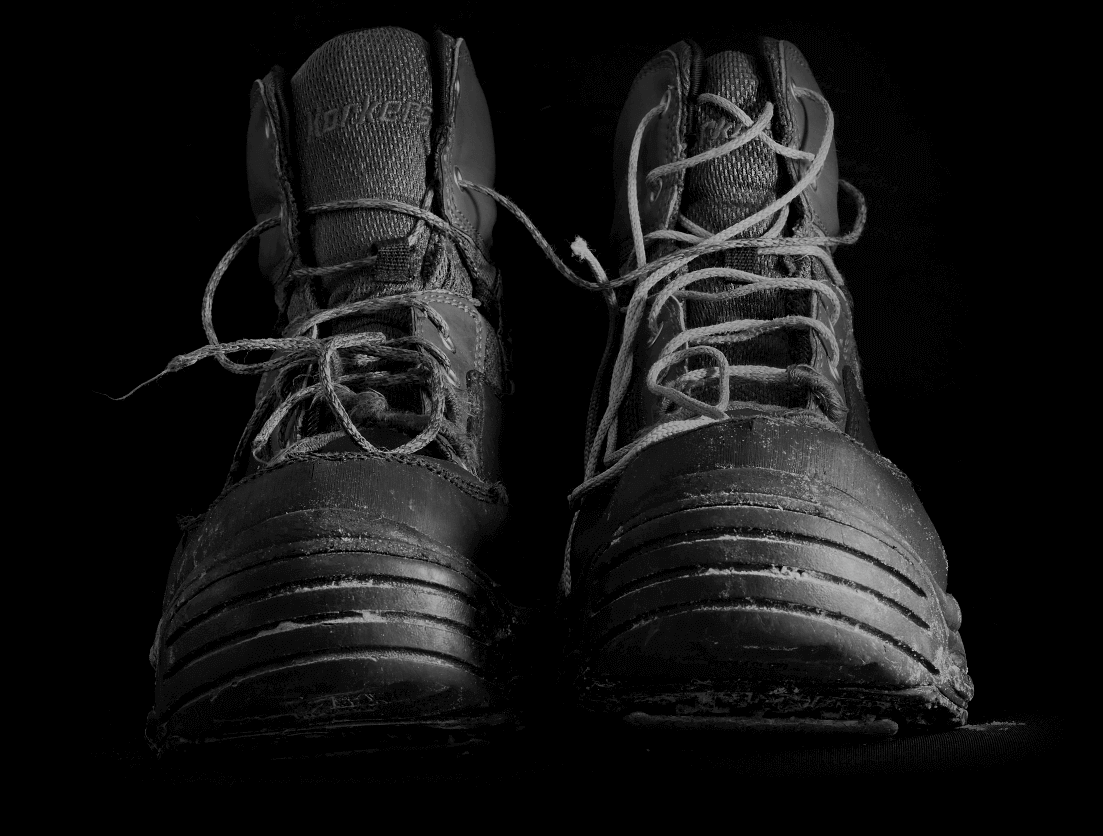
WADING BOOTS 1800 G
WADING BOOTS 1800 G

15.7 Kilograms
A surprisingly high dry weight total, although not completely out of our estimate, as it's always a hard balancing act between the requirements, the wants and the available space.
We'll take stock again in a season or two to see if the trend for us is towards lighter or heavier but in the meantime we would love to hear your experiences with your gear setup and weights.
A surprisingly high dry weight total, although not completely out of our estimate, as it's always a hard balancing act between the requirements, the wants and the available space.
We'll take stock again in a season or two to see if the trend for us is towards lighter or heavier but in the meantime we would love to hear your experiences with your gear setup and weights.
Copyright © 2011 - 2024 loclouds. Built in Helsinki with pride. Get in touch